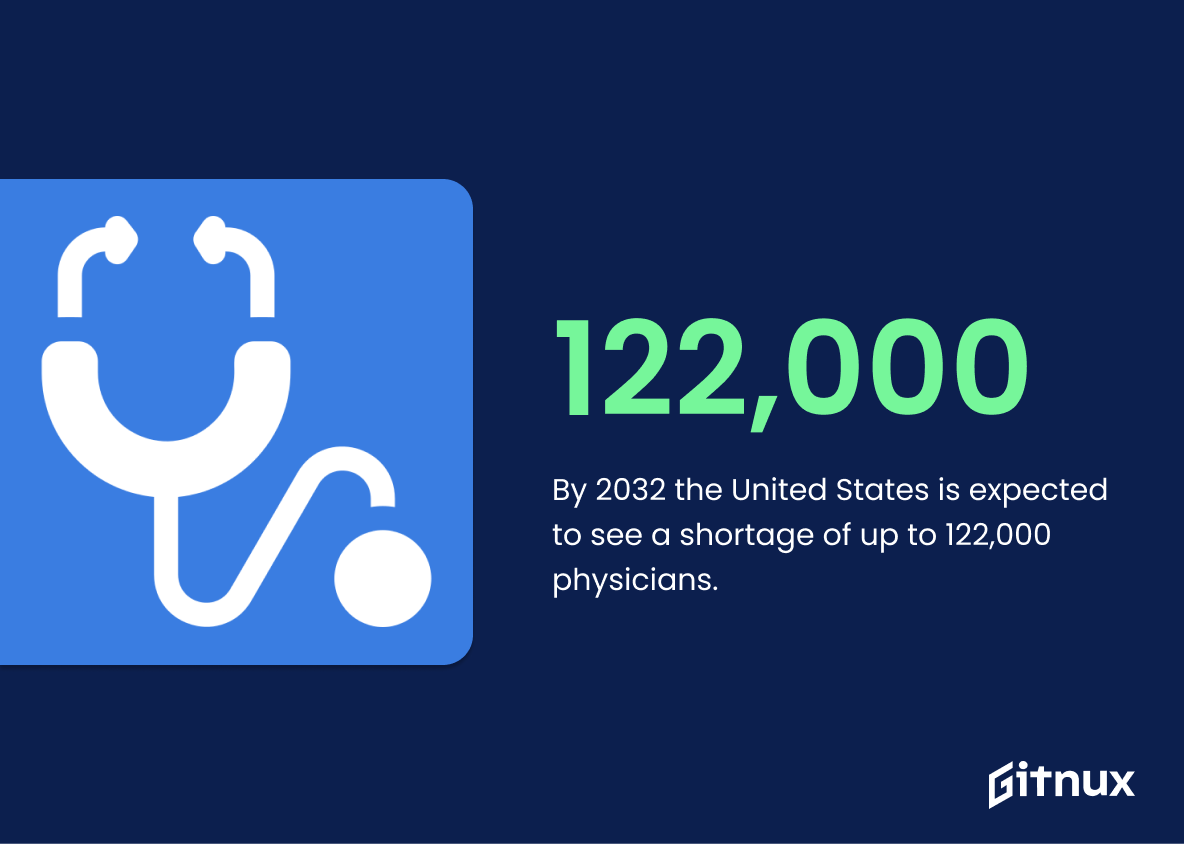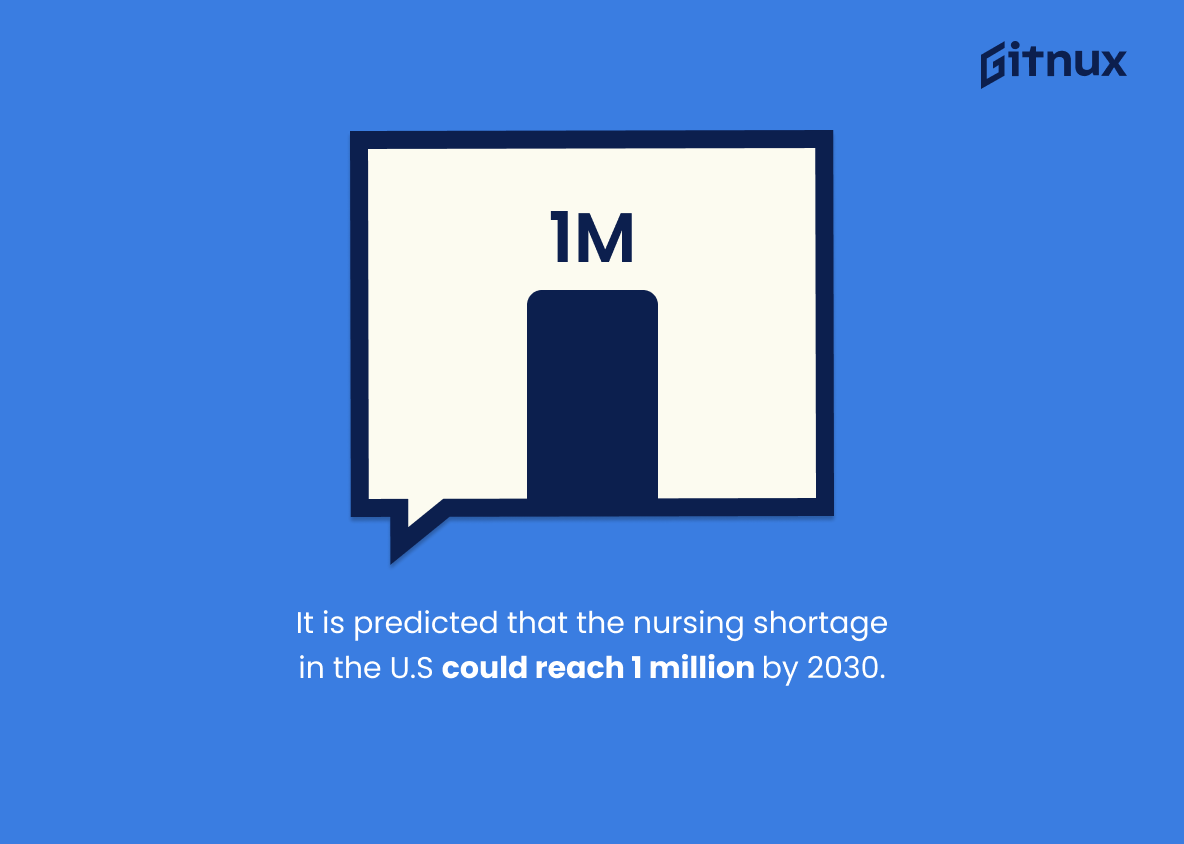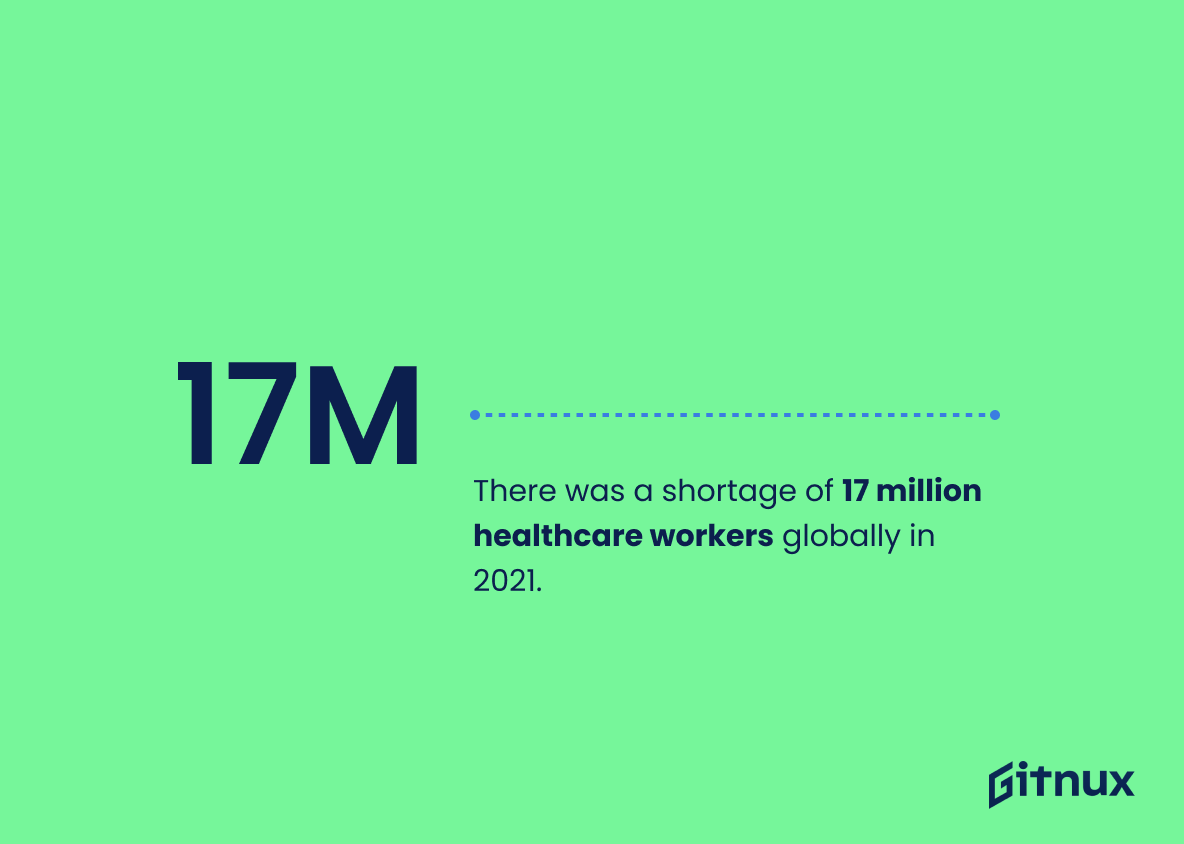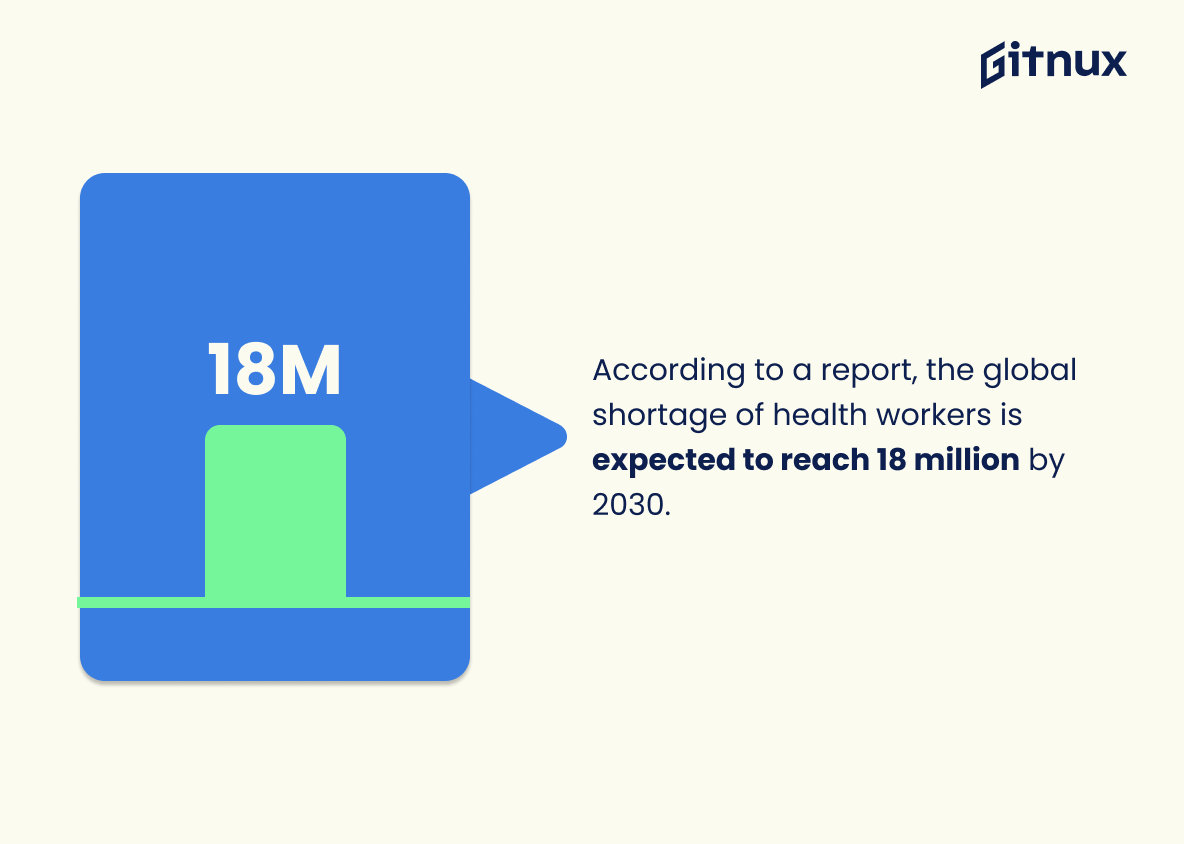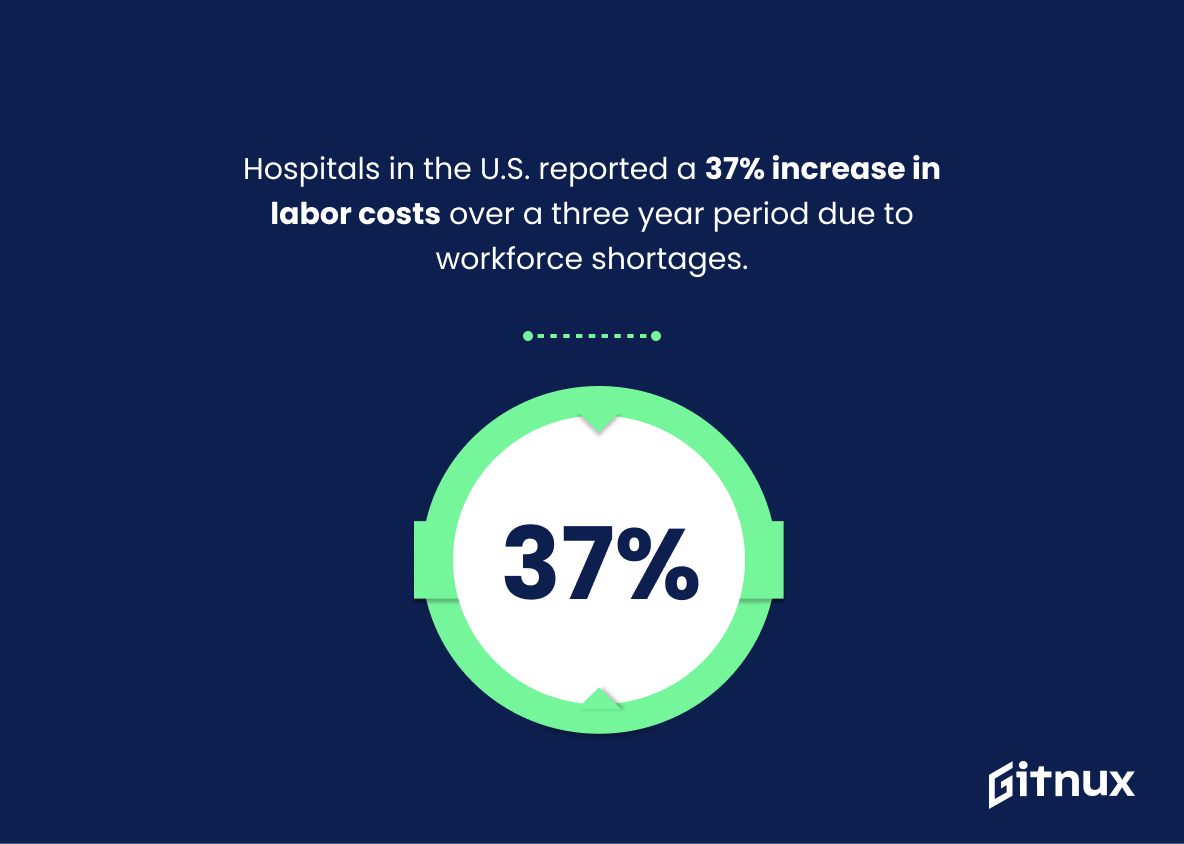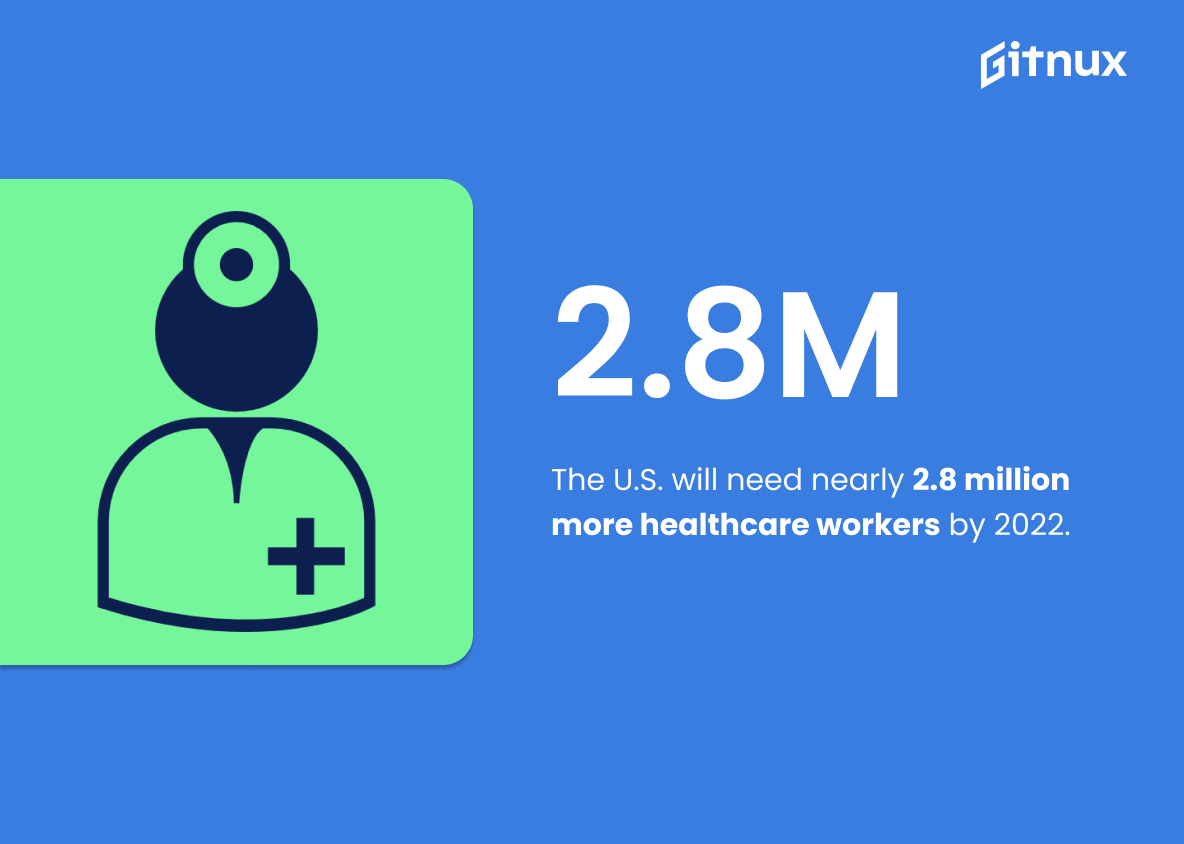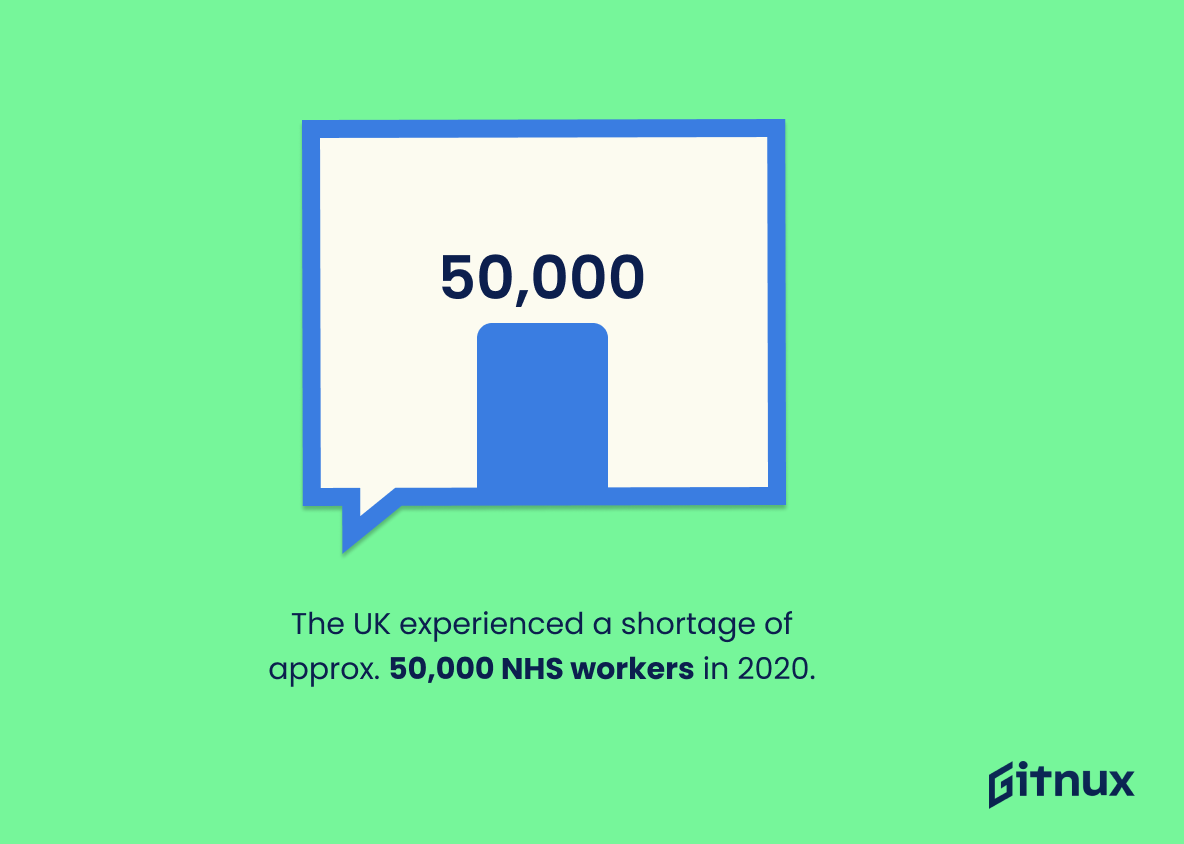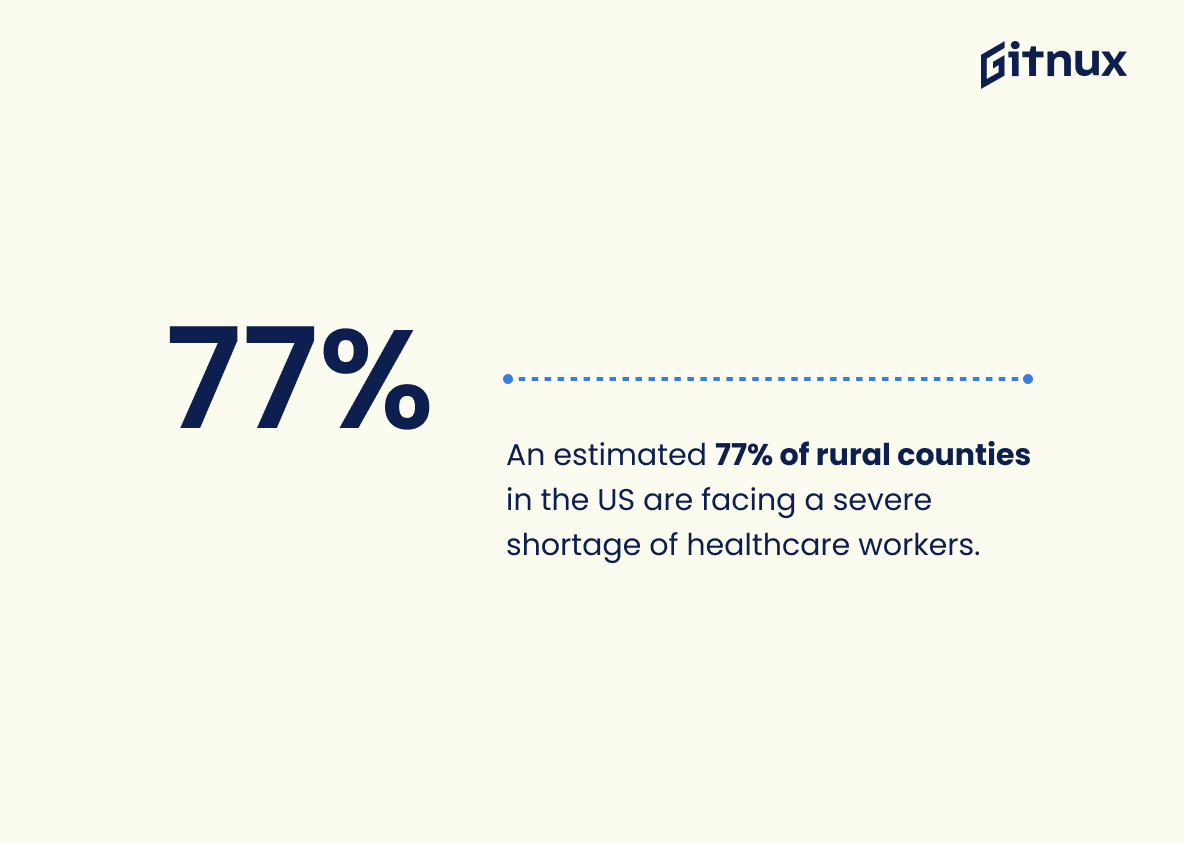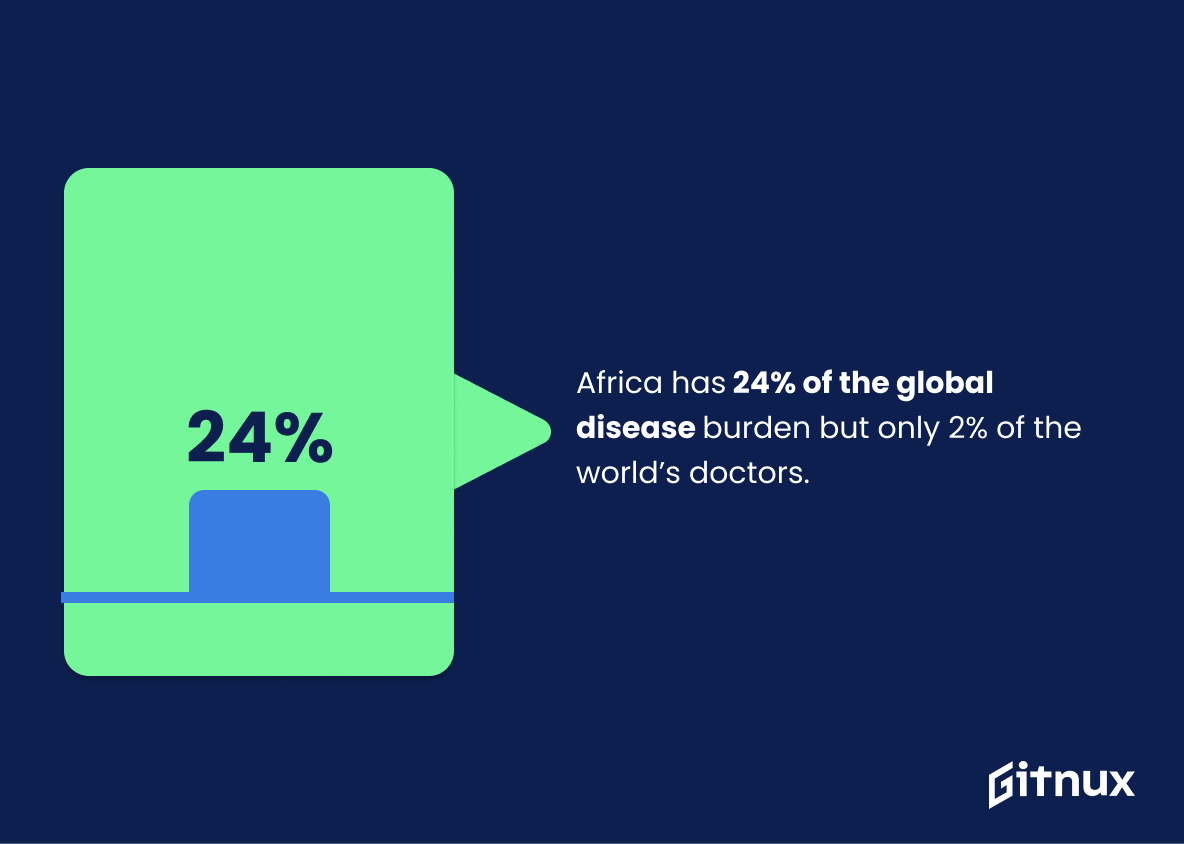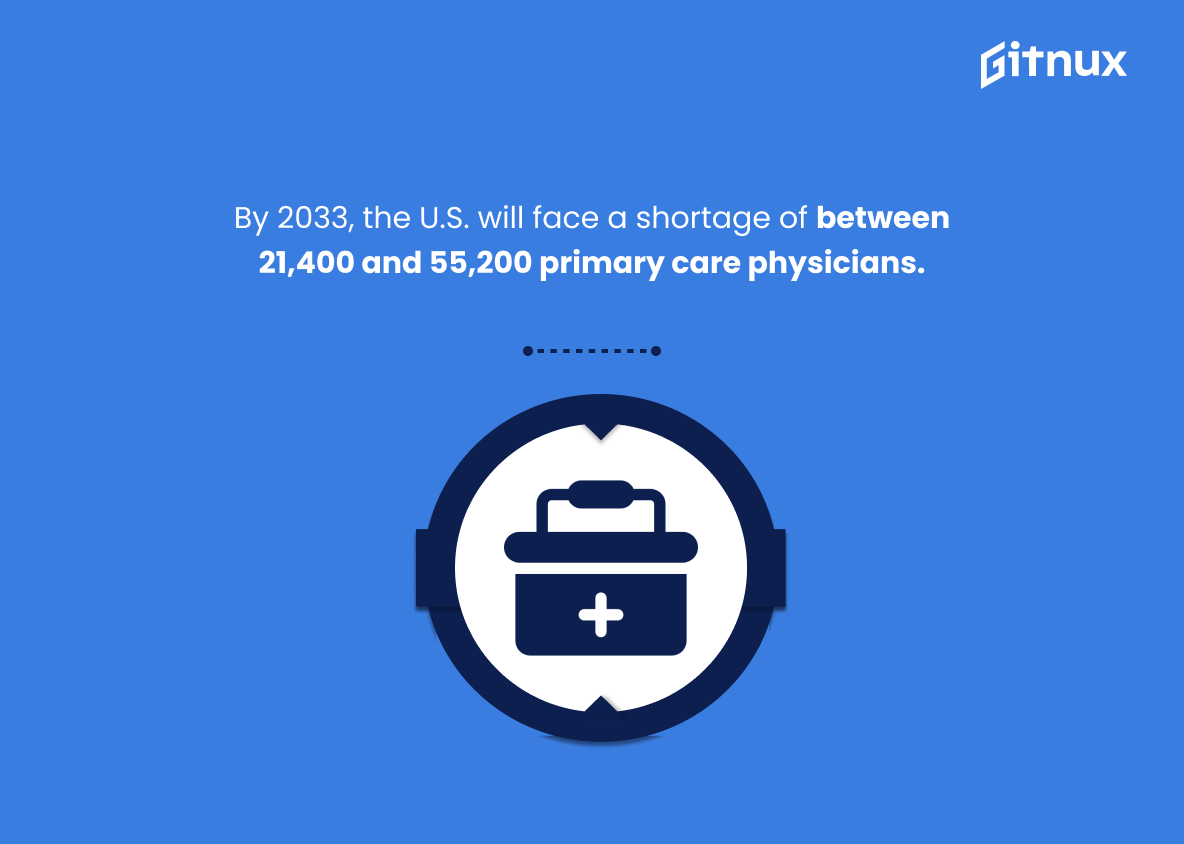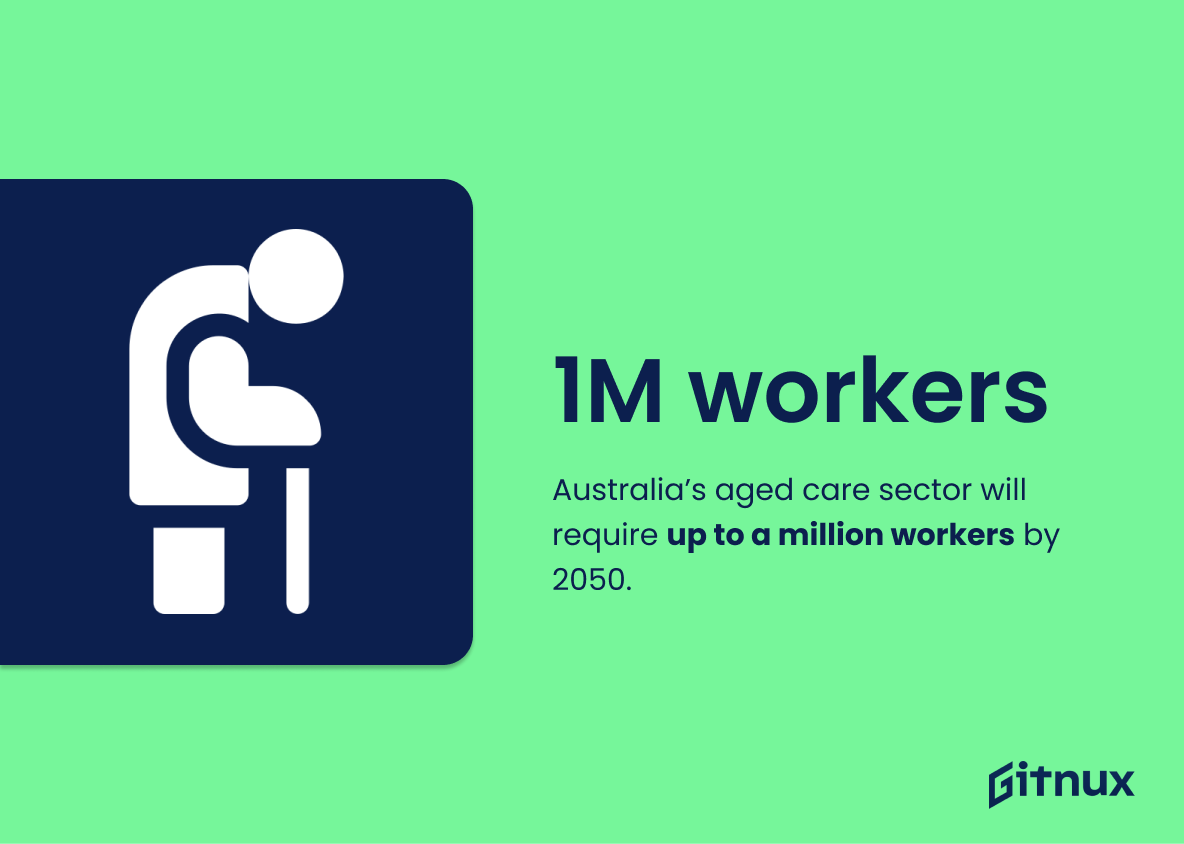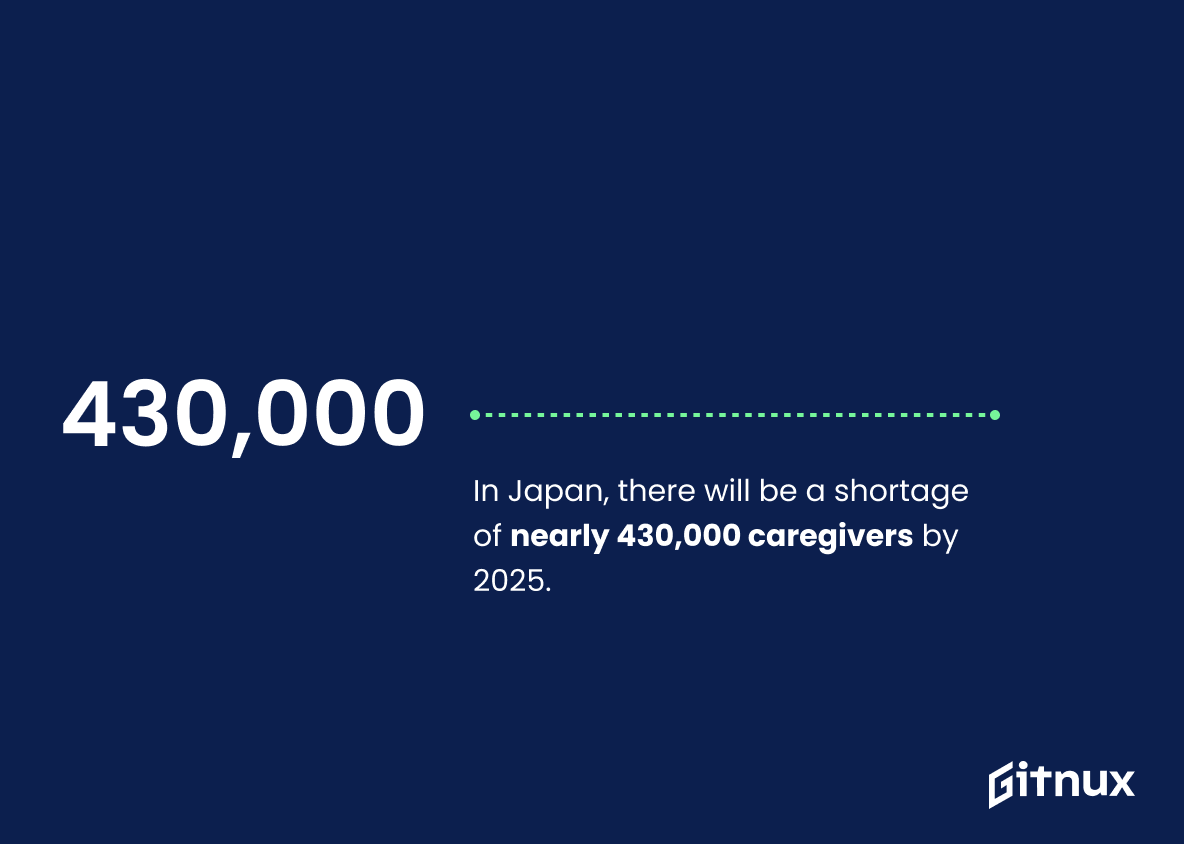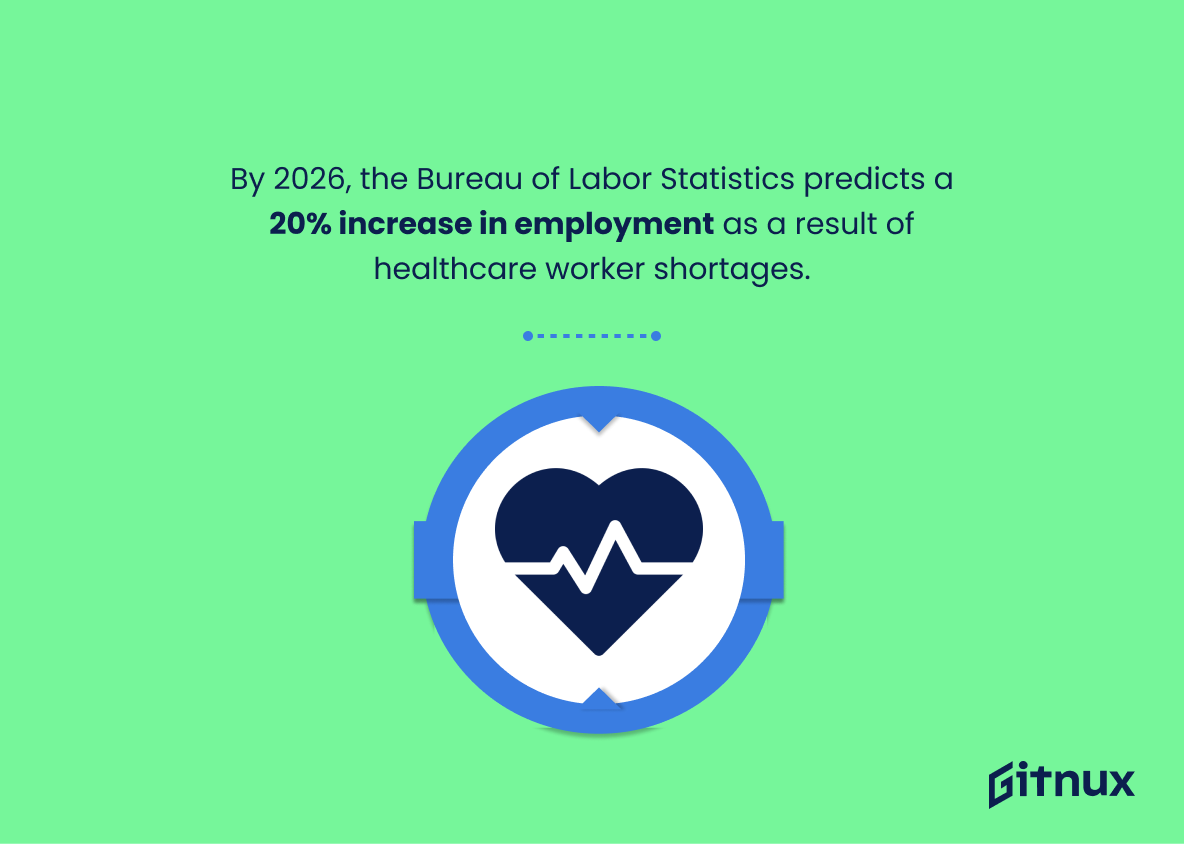In today’s evolving health landscape, a crucial facet demanding our attention is the burgeoning shortage in the healthcare workforce. This startling issue is reshaping the contours of health services around the globe, directly impacting patient care. This blog post will delve into the essential health workforce shortage statistics, unveiling the size, scope, and underlying causes of this unsettling trend.
We’ll explore the realities behind the figures, connecting the dots to understand the implications on healthcare delivery, and charting possible solutions shaping the future of healthcare workforce market dynamics.
The Latest Healthcare Workforce Shortage Statistics Unveiled
By 2032 the United States is expected to see a shortage of up to 122,000 physicians.
Underlining the gravity of future healthcare provisions, this alarming projection of a physician deficit by 2032 dramatically brings to the forefront the impending crisis of healthcare workforce shortage. Within the framework of healthcare industry trends, this statistic resonates significantly by directly impacting both the quality and accessibility of healthcare services.
It underscores the urgent necessity for strategic recruitment, robust training, and sustainable measures to retain frontline healthcare warriors. Upcoming policy decisions, academic endeavors, and health sector reforms must heed this call to action to piece together a comprehensive plan addressing the looming gap in the physician workforce. The stakes are indeed high, as it is the wellbeing of countless individuals that rest on the scale.
It is predicted that the nursing shortage in the U.S could reach 1 million by 2030.
Highlighting the forecasted nursing shortfall in the U.S of up to 1 million by 2030 serves as a striking alarm bell in the discourse of Healthcare Workforce Shortage Statistics. This pressing numeric revelation not only emphasizes the grave future healthcare landscape but also underlines the pressing need for addressal strategies.
The scope of the envisioned deficit clearly demonstrates the accelerating demand for nurses, a critical backbone of the healthcare system, and the impeding strain on the quality, access, and cost of healthcare. In essence, this stark number forms the axis around which rotates a profound narrative of the challenges and ripple effects facing the healthcare industry due to workforce shortages.
There was a shortage of 17 million healthcare workers globally in 2021.
This statistic paints a vivid picture of a monumental crisis in global health care systems. Looking through the lens of the 2021 deficiency of 17 million healthcare workers across the globe, it’s as if the heartbeat of the entire healthcare system is skipping beats due to a shortage. The population is growing, diseases are becoming more complex, yet the vital veins of our healthcare systems – the workforce, are insufficient.
The glaring gap in healthcare professionals becomes the spotlight, demanding immediate strategizing and action, both in terms of attracting new blood into the workforce and retaining existing talent. It’s not just a statistic, but a global outcry for need and action. From the perspective of a blog on Healthcare Workforce Shortage Statistics, this number doesn’t just offer a perspective, it’s a dramatic headline screaming for attention and discourse.
According to a report, the global shortage of health workers is expected to reach 18 million by 2030.
Imagine standing amidst a bustling city, where each individual represents a healthcare worker. Now picture roughly a quarter of that population disappearing. The city isn’t as lively as before, is it? That’s the real-world significance of the projection that the global shortage of health workers will reach 18 million by 2030.
This daunting figure serves as a wakeup call, driving home the urgency and gravity of the situation. In a blog post discussing Healthcare Workforce Shortage Statistics, the 18 million deficit wouldn’t just be another number. It establishes the scale of the global issue, clearly outlining the magnitude of the problem.
Furthermore, it provides a timeline. By presenting a deadline—2030, the statistic compels immediate action, stressing that the issue is not a distant future problem, but a pressing concern. In essence, this statistic sets the stage for understanding the potential consequences if action isn’t taken now.
When painted with this data point, the picture of our future world is a sobering one. It underscores the imminent crisis, pushing policy makers, health institutions, and the public to grapple with the hard-hitting reality of what our healthcare systems could look like. Together, these elements illustrate why this statistic is, indeed, absolutely crucial to a blog post about Healthcare Workforce Shortage Statistics.
Hospitals in the U.S. reported a 37% increase in labor costs over a three year period due to workforce shortages.
As we delve deeper into the nuances of Healthcare Workforce Shortage Statistics, we stumble upon an astounding revelation: U.S hospitals have encountered a 37% increase in labor costs over a desolate period of three years. This uptick is not due merely to whimsical market forces or abstract economic phenomena, but a solid, tangible beast – workforce shortages.
Let’s visualize it in terms of a puzzle – if the pieces, i.e., healthcare workers, are missing, the whole picture, i.e., a fully functional healthcare system, remains incomplete. This incomplete picture necessitates the existing pieces to work overtime, potentially straining them, resulting in higher labor costs. Thus, shedding light on the inextricable linkage and domino effect healthcare workforce shortages have on economic aspects, such as labor costs, within the healthcare sector.
The U.S. will need nearly 2.8 million more healthcare workers by 2022.
Imagine navigating a rapidly swelling stream without a sturdy bridge. That’s akin to the imminent problem faced by the U.S. healthcare system. A demand surge for 2.8 million additional healthcare workers by 2022 mirrors this stream, reflecting the growing healthcare needs of an aging population and the escalating challenge of chronic diseases.
In the realm of a blog post about Healthcare Workforce Shortage Statistics, this statistic serves as the main anchor, spotlighting the magnitude and urgency of the healthcare workforce crisis. Further, it amplifies the call for shrewd, proactive strategies to tackle the workforce shortage, thereby making meaningful strides toward a healthier and more robust healthcare system.
The UK experienced a shortage of approx. 50,000 NHS workers in 2020.
Highlighting the statistic about the UK facing a shortage of nearly 50,000 NHS workers in 2020 puts a spotlight on the immense strain on the healthcare sector. In the theatre of the healthcare workforce crisis, it headlined as a shocking marquee. It serves as a reflection of the mounting tension and increasing demand within the healthcare landscape, tipping the delicate balance of supply and demand of health professionals.
In a blog post about Healthcare Workforce Shortage Statistics, this piece of information paints an alarming picture of the real-world implications of workforce shortage on a healthcare system’s capacity to deliver adequate and timely care. Illustrating the depth and impact of such shortages allows for a better understanding, stimulating valuable dialogue for potential solutions to the escalating global issue.
An estimated 77% of rural counties in the US are facing a severe shortage of healthcare workers.
This intriguing figure of 77% casts an alarming light on the critical situation facing rural counties in the US; it’s like a silent cry for attention that underscores the magnitude of healthcare workforce shortage. Within the framework of a blog post on Healthcare Workforce Shortage Statistics, this data certainly fortifies the discussion, presenting a concrete picture that empowers readers to understand the seriousness of the situation.
This revelation invites policy makers, healthcare professionals, and the general public to engage in an urgent dialogue, and brainstorm practical solutions. Undoubtedly, this stat stands as a cornerstone in portraying the rural healthcare crises and accentuating the urgency for rectification and reform.
Africa has 24% of the global disease burden but only 2% of the world’s doctors.
Examining this striking stat can elicit a profound understanding about the stark realities of healthcare workforce imbalances in our global community. Africa, with its quarter proportion of the world’s disease burden, is alarmingly equipped with a meager 2% of the world’s doctors. This underlines a critical shortage and uneven distribution of healthcare professionals, a theme that is not only relevant but central to conversations about global healthcare access and quality.
Coupled with the continent’s unique healthcare challenges, these numbers are more than mere statistics, they echo a sobering call to address drastic inequities in healthcare provision worldwide.
By 2033, the U.S. will face a shortage of between 21,400 and 55,200 primary care physicians.
Shining a spotlight on the impending crisis forecasted for 2033, the U.S. is steering towards a cliff-edge scenario in healthcare, with a predicted deficiency of primary care physicians ranging from 21,400 to 55,200. Within the healthcare workforce shortage landscape, this statistic is a siren call that underscores a significant and sobering healthcare challenge. In a blog post examining such statistics, it serves as compelling evidence of the looming workforce crisis that could impact patient care access, particularly in primary care, across the country.
The forecasted shortage would not only mean longer wait times for appointments, but also shorter consultation periods, potentially leading to rushed or misdiagnoses. Moreover, it may contribute to an increased burden on secondary and tertiary care services, as patients’ primary healthcare needs remain unmet. Thus, this statistic instigates a crucial conversation on strategic human resources planning in healthcare, the need for reinvigorated policy interventions, and workable solutions aimed at attracting and retaining primary care physicians in the long run.
Additionally, this statistic envisages a future where telehealth and artificial intelligence may play significant roles in bridging this imminent gap in primary care. Therefore, within the context of examining healthcare workforce shortage statistics, this projected number lays a critical foundation for discussions on future healthcare delivery modalities as well.
Australia’s aged care sector will require up to a million workers by 2050.
Projecting the impending demand in Australia’s aged care sector draws attention to the escalating Healthcare Workforce crisis. The startling prediction of requiring up to a million workers by 2050 opens a Pandora’s box of issues, clouding Australia’s medical horizon. In the grand context of a blog post dissecting Healthcare Workforce Shortage Statistics, the statistic serves as a dire warning.
It shines a spotlight on the immense pressure that the aged care sector will face, emphasizing the importance of immediate initiatives to ramp up workforce numbers, enhance training, and promote sectoral growth. Otherwise, the ramifications could not just impact Australia, but echo throughout the global health community, given that many nations grapple with similar issues amid aging populations.
By 2025, the allied health workforce in India is expected to experience a shortage of around 2 million professionals.
Highlighting future projections, like the anticipated 2 million deficit in India’s allied health workforce by 2025, paints a compelling picture of the gravity of healthcare workforce shortages. It injects a degree of urgency into the narrative, addressing not just present concerns but also looming challenges. In assessing this statistic within a blog post on healthcare workforce shortage statistics, one can swiftly underline the far-reaching implications of this predicament.
For instance, an insufficient healthcare workforce can impede a country’s ability to handle public health emergencies, manage regular health check-ups, and tackle pressing diseases. Furthermore, this lack could drastically impact the medical care quality and availability in one of the world’s most populous countries, India, thereby shining light on the scale and importance of such an issue.
In Japan, there will be a shortage of nearly 430,000 caregivers by 2025.
Highlighting the projection of a severe caregiver shortage in Japan by 2025 offers a glimpse into the challenging horizon of healthcare globally. This information significantly emphasizes the pressing need to act decisively and quickly in fortifying our healthcare workforce. It serves as a critical alarm bell, underscoring the imminent crisis if appropriate measures are not taken immediately.
In the context of a broader discourse on healthcare workforce shortage, Japan’s case provides potent evidence of implications of this shortage as we steer into the future. This data, apart from setting a concerning precedent for other graying nations, forces stakeholders across the spectrum in any region to evaluate the current strategy, explore systemic inefficiencies and innovate resource allocation for a healthier future.
Canada currently has a shortage of about 4000 doctors.
This critical figure paints a powerful picture of the pressing professional shortage within the Canadian healthcare system. In the tableau of healthcare workforce shortage statistics, those 4000 missing doctors in Canada are not just a number, but voices waiting to be filled. They underline an urgent and essential need for new healthcare employees to step into these roles, which are integral to ensuring the standard and effectiveness of medical services.
The absence left by these doctors can affect healthcare availability, timely treatments, and even the overall quality of patient care. Therefore, this statistic is not merely a figure to be skimmed over, but a crucial focal point of our conversation about healthcare workforce shortages.
By 2026, the Bureau of Labor Statistics predicts a 20% increase in employment as a result of healthcare worker shortages.
Painting a picture of the anticipated healthcare landscape, the Bureau of Labor Statistics expects a soar by 20% in job opportunities by 2026. This reflects the urgent call for a bolstered healthcare workforce, fueled by a forecasted dearth in staff as illustrated in the blog post about Healthcare Workforce Shortage Statistics. This substantial employment surge underpins the urgency to both attract and retain healthcare professionals to plug the shortage gap.
It underlines the gravity of the shortage issue, and reinforces the need for strategic plans and initiatives to support the growth and stability of the healthcare workforce. The future of healthcare, thus, partly hinges on how proactively this predicted employment hike is managed, making this a poignant statistic within the wider dialogue around healthcare workforce shortages.
The US healthcare industry will continue to be the largest employer in the country by 2030.
Flicking the spotlight on the assertion that the US healthcare industry will continue to dominate as the largest employer by 2030, we glean crucial insights into the gravity of workforce shortages faced by this sector. Engulfed in this prediction lies a twin concern. On one hand, it underscores the escalating demand for medical services and professionals, propelled by the ageing baby boomer generation and the increasing prevalence of chronic diseases.
On the flip side, it brings into sharp relief the impending healthcare workforce crisis, given the current rate of retirements in the industry and the exacerbating shortage of new recruits to fill in those hefty shoes. Paired with the unyielding pandemic, this daunting statistic underscores the urgent need for strategic planning and robust policy making in tackling healthcare workforce shortages.
The World Health Organization estimates that there will be a worldwide shortage of 12.9 million healthcare workers by 2035.
Navigating the sea of Healthcare Workforce Shortage Statistics, one fact towers like a lighthouse beacon—the concept of a looming deficit of roughly 12.9 million healthcare workers by 2035, as projected by the respected World Health Organization. This formidable number casts not only a massive shadow, but it emphasizes the gargantuan scale of the impending crisis.
Like an alarm bell that fuels our urgency, it forces us to grapple with the gravity of the situation and compels the global community to marshal resources towards prioritizing healthcare workforce planning and investment. This projection thus functions as a litmus test of our preparedness to maintain the resilience and adequacy of the healthcare system in the face of the demographic, epidemiological, and technological challenges that the future holds.
The U.S. will face a shortage of between 54,100 and 139,000 physicians by 2033.
Examining this statistic magnifies a potential headache for the U.S. healthcare system. The looming deficit of 54,100 to 139,000 physicians by 2033 sketches a daunting future. This steep plunge into the red for medical professionals not only threatens the functioning and performance of the healthcare industry, but it carries grave implications for the general population.
The scarcity could potentially lengthen waiting times, strain patient care services, and create barriers to healthcare access, particularly in underserved regions. From the perspective of healthcare workforce shortage trends, the statistic underlines the pressing urgency to implement strategies designed to recruit, train, and retain medical practitioners on a national scale.
To meet the needs of an aging population, the supply of the US nursing workforce must increase by 3.79% annually.
Highlighting the need for a 3.79% annual increase in the US nursing workforce sheds light on a crucial issue at the intersection of two significant trends in the blog post on Healthcare Workforce Shortage Statistics. Firstly, it underscores the impending reality of an aging population, a demographic shift that will undoubtedly place a heavier burden on the healthcare system due to increased demand for medical services. Secondly, it identifies a tangible goal for the expansion of the nursing workforce as a means of addressing this challenge.
This specific figure serves as a rallying point for policy makers, educators, and healthcare providers to strategize and implement actions aimed at attaining this annual growth rate. Ultimately, the strength and efficiency of the healthcare sector hinge on meeting benchmarks like this.
There were over 180,000 vacant NHS posts in the first quarter of 2019 in the UK, up from 88,994 in 2014.
Immerse yourself in some head-spinning figures for a moment; imagine a leap from 88,994 to over 180,000 – a shocking exposition of the burgeoning crisis in the NHS workforce in the UK. This wake-up-call encapsulates the magnitude of the healthcare workforce shortage, painting a stark portrait of just how the NHS landscape had radically transformed from 2014 to the first quarter of 2019.
Dive deeper into these numbers and they reveal more than just astronomical escalation; they expose a systemic problem, a ticking time bomb of unfilled roles within the NHS. The implications are far-reaching, impacting not just the ability of the healthcare system to serve its patients but also the workload and stress levels of existing staff.
In a healthcare setting, where demand is relentless and resources are finite, such a dramatic shortfall hints towards a bleak prognosis: longer wait times, potential lapses in patient safety and plummeting morale among existing staff.
Delving into the world of healthcare workforce shortage statistics, this numerical revelation emanates as an unmissable beacon warning us of the dire necessity for immediate intervention and sustainable, effective solutions.
Conclusion
Facing the severity of healthcare workforce shortages is a top priority for policymakers and healthcare leaders across the globe. Proactive efforts are needed to address this issue as it poses significant threats to the quality, accessibility, and delivery of health services. Changing demographic trends, coupled with the escalating demand for healthcare, make it imperative to devise effective strategies to mitigate these shortages.
By fostering engagement among health professionals, investing in education and training programs, and leveraging the power of technological advancements, we can hope to turn the tide in favor of a more abundant, capable, and resilient healthcare workforce. The statistics we’ve dissected in this blog underscore the gravity of the situation and should serve as a wakeup call to all stakeholders of the healthcare ecosystem. In conclusion, it falls upon each one of us to acknowledge, understand and act urgently in response to the emerging crisis of healthcare workforce shortages.
References
0. – https://www.www.beckershospitalreview.com
1. – https://www.www.ncbi.nlm.nih.gov
2. – https://www.www.bloomberg.com
3. – https://www.www.ahrq.gov
4. – https://www.www.theguardian.com
5. – https://www.www.afro.who.int
6. – https://www.www.aamc.org
7. – https://www.www.bma.org.uk
8. – https://www.www.theatlantic.com
9. – https://www.www.bls.gov
10. – https://www.www.abc.net.au
11. – https://www.www.who.int
12. – https://www.ruralhealth.und.edu
13. – https://www.www.nursingworld.org
